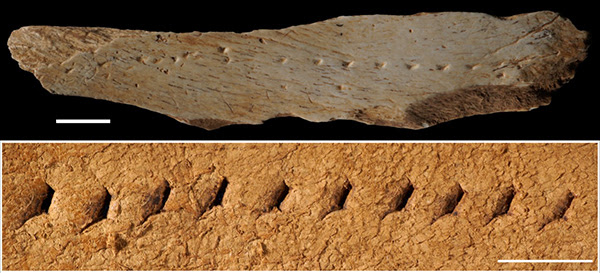Researchers find evidence humans produced leather clothing in Catalonia 39,000 years ago
Bone in Gavà, south of Barcelona, believed to have been used as board to puncture animal hides

A bone discovered in an archeological site in Gavà, south of Barcelona, has led researchers to believe that humans produced leather clothing in the area 39,600 years ago.
The research team, which was led by Luc Doyon from Bordeaux University and included Montserrat Sanz and Joan Daura from the University of Barcelona, published their findings in 'Science Advances' magazine.
The bone found at Canyars, a site dating back to the Early Upper Palaeolithic in the coastal town of Gavà, was punctured – according to researchers, this is because the board was used to perforate holes into the leather with a burin, a stone cutting tool used in prehistoric times.
The paper published in the scientific journal highlights the significance of the finding.
"Changes of tool and variation in the arrangement and orientation of punctures are consistent with the interpretation of this object as the earliest-known leather work punch board recording six episodes of hide pricking, one of which was to produce a linear seam," it reads.
According to researchers, the results indicate that hunter-gatherers "used this technology to produce leather works and probably tailored clothes well before the introduction of bone-eyed needles in Europe 15,000 years later."
The leather punch board was made from a fragment of a large mammal's hip bone, such as a horse or a large bovine.
Researchers have ruled out the possibility that the technique was used for decorative purposes or for numeric records.
Sanz said, "It is the first time that burins have been used to perforate hides."
"Taking into account the shape of the perforations in the bone and the distance between them, we can state that they had enough technology to perforate hides and make tight-fitting clothing, shoes or tents."